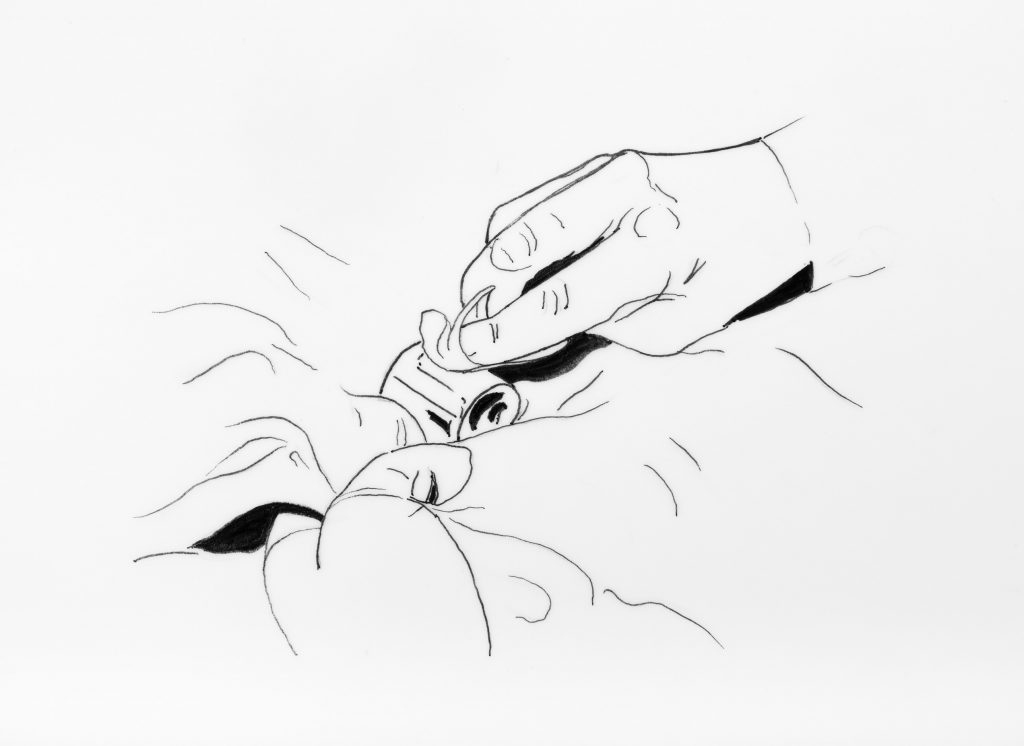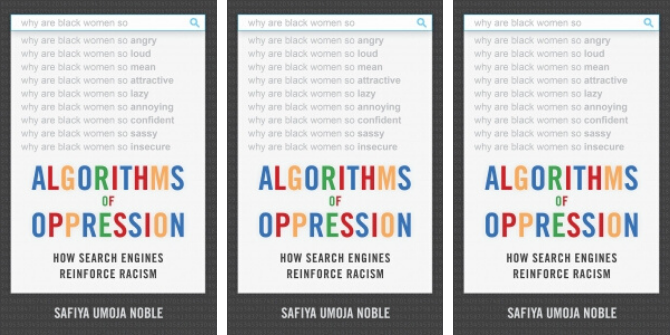We speak to Dr Dylan Mulvin, Assistant Professor in LSE Department of Media and Communications, about his book Proxies: The Cultural Work of Standing In, which examines the ways in which proxies shape our lives, the histories of their production and how we delegate power to represent our world.
You can visit the MIT Press website to purchase Proxies or download a free, open access copy. Proxies is launching at LSE on Thursday 18 November as an online public event.
Q&A with Dylan Mulvin on Proxies: The Cultural Work of Standing In. MIT Press. 2021.
Q: How do you understand the role of the proxy?
If proxies are those people, places and things that we choose to stand in for the world, they play all sorts of different roles in making societies run and holding communities together. We have proxy voters who stand in for us when we can’t be present; we have proxy servers that buffer our connection to computer networks; and we have proxy wars that serve as satellite battlefields. The person, place or thing is a trusted delegate, standing in for something else, allowing us to displace the need for the real thing in order to accomplish some social, technical or political goal. In this way proxies are a means to an end.
But I’m interested in the world of less conspicuous proxies that suffuse our lives: the colour bars you might use to calibrate your television or computer monitor — a proxy for the normal range of visible light, and ‘normal’ human vision, that we can adjust to our expectations. Or the market basket of goods that stands in for an average consumer’s purchasing habits in calculating inflation. Or the crash test model that stands in for human bodies when they are at their most vulnerable. These are not proxies for specific people or habits but for ideas of ‘the ideal’, ‘the average’ or ‘the normal’. They are the necessary forms of make-believe that we use in the production of knowledge and the standardisation of the world.
While these proxies might escape notice on a day-to-day basis, they mould what is visible, how we can afford to make-do or how we might survive an accident. These are cultural artifacts, steeped in the biases and favouritisms of people and the limited ways we might envision our world. Hence, colour television was bad at reproducing non-white skin, the market basket of goods fails to capture quality of life and the bodily template of crash test models has been tied to higher mortality for people who don’t conform to its notions of the average (including most women).
So, proxies are all around us: they perform the necessary work of standing-in, but they are also shaped and twisted to fit specific visions of the world. We need proxies, in other words, but we also need to attend to the ways they shape our lives, the histories of their production and the reasons we might reject them and demand better stand-ins.
Q: What led you to focus your research on stand-ins?
I began this project ten years ago, and it grew out of a fascination with test images (the focus of Chapters Three and Four in the book). With Jonathan Sterne I wrote about the 27 Kodak slides used as test images to standardise American colour TV. These images were peculiar cultural artifacts (odd pictures of people rowing and playing table tennis) and crucial scientific instruments. I was captured by the work that engineers had to do to reconcile those two dimensions without undermining either.
 Image Credit: NTSC test image, 1955
Image Credit: NTSC test image, 1955
I started collecting other examples of proxies – test sounds, measurement prototypes, test cities, standardised patients and mock juries. What I had seen with test images – that awkward reconciliation of cultural outlook and professionally compelled objectivity – now appeared to be part of a much larger and familiar process of ‘proxification’ in the production of knowledge. The collection of proxies that became my book’s focus were chosen because they had lasted through time, become critical to different institutions (the US military, the metric system, computer science and the medical establishment), and they demonstrated the embodied and laborious nature of proxy work.
It was essential to be doing this research at a time when others were looking at stand-ins. When I began working on television test images, Lorna Roth had already published her work on the history of Shirley Cards, Genevieve Yue was working on so-called ‘China Girl’ images and Jacob Gaboury was working on the history of digital imaging, including test objects. Roth and Yue had provided a language for talking about the gendering and racing of stand-ins in visual media and Sue Murray’s work on the history of colour TV showed how the labour of standardisation linked up with the larger project of infrastructural and aesthetic renewal. The fact that we were all working on film, television and very early computer technology meant that there was a solid framework for placing novel AI techniques within the longer history of the politics of proxies.
Q: How is this research different from exploring the history of working objects?
Great question: investigating working objects in scientific domains has often been central for historians of science. Among others we have Robert Kohler’s history of the fruit fly Drosophila used in genetics research, Nathan Ensmenger’s account of chess in AI and Lorraine Daston and Peter Galison’s scientific atlases in Objectivity. What these histories show is how different disciplines have adopted models for the world when the world itself is ‘too plentiful and too various’ (to use Daston and Galison’s phrase). The models themselves have to be accessible and usable. Chess is ready-to-hand for many computer scientists just like fruit flies are abundant and easily replaced (a rotting banana is often all you need). Each one tells a fascinating story of the material specificity of these workable models — and how each discipline was shaped through their use of common objects.
In Proxies I sought to build on these histories but also stretch the focus to the labour, performance and bodies of the people who work with and as proxies. The chapter on standardised patients, for instance, looks at human actors who perform as ill or disabled. I’m not comfortable thinking of people as ‘working objects’. The work these actors perform goes far beyond the mechanistic function of a chessboard or the fungibility of a fly; it must incorporate their own sentiments, affects and idiosyncratic bodies. My hope would be that people can read Proxies alongside histories of working objects to think about the politics of proxification more broadly.
Q: In Chapter Two you explore the hand-cleaning of the International Prototype Kilogram, which acted as the worldwide stand-in for mass. Why is it vital to recognise that information management and data hygiene require manual and bodily processes of cleaning and maintenance?
One of the central arguments of Proxies is that we can understand the role that stand-ins play in society through the work people have to perform to keep proxies viable. If proxies are analogies for the world out there, then we have to keep track of all of the labour it takes to keep that analogy alive. When I was researching the history of the metric system, I was amazed to find these precise guidelines for washing and cleaning kilograms. Because all metals are porous, the platinum-iridium surface of the metric system’s prototypes soak up their surroundings. While we have these beautiful and odd rituals in nineteenth-century France for consecrating a piece of platinum-iridium as the definition of mass, you get these understated guidelines for rubbing the kilogram with chamois leather to give it a ‘rather handsome, but not specular’ appearance.

Image Credit: Cleaning a kilogram by hand. Credit: R.R. Mulvin.
If we can talk about hygiene for kilograms — the basis of virtually all mass measurements in the world — in terms of ‘handsome but not specular’ appearances, then there must be an inescapable bodily and aesthetic dimension to how we handle information and data. There’s been a turn towards maintenance and repair in Media Studies and Science and Technology Studies, and a longer history of attending to the labour of upkeep in feminist theory and sociology. We see the importance of the labour of upkeep, and the toll it takes on bodies, in the role that content moderators play in cleaning up the most gruesome segments of the internet. The history of the kilogram shows us that the manual and embodied labour it takes to maintain a system long-predates the ‘digital’ and extends to the most basic units of measurement science.
Q: In Chapter Three you look at the history of the ‘Lena image’. How did this photograph of a 1972 Playboy centrefold, featuring the model Lenna Sjööblom, become a standardised test image?
There are different accounts of the origins of the ‘Lena’ or ‘Lenna’ test image. But they all agree that in 1973 engineers at the University of Southern California’s Signal and Image Processing Institute (SIPI) scanned the centrefold image of the November 1972 issue of Playboy, either tearing or folding the image above the model’s bare chest, and therefore sanitising it for scientific use. USC was one of the first institutions connected to ARPAnet, what would become the internet, and they used the image to practise digitising images for network transmission. In other words, they were honing a visual, digital and networked medium through their trained surveillance of women’s bodies.
As an early entrant into networked image transmission and transformation, SIPI also produced its own set of test images and shared their database with people who visited the lab (the database is still available on their site, though they’ve recently removed the Lena image). The Lena image floated to the top and became one of the most frequently reproduced images in published research. By the first volume of a new image processing journal (Transactions on Image Processing) in 1992, you can find more than 200 reproductions of the Lena image, as it had become a lingua franca for demonstrating one’s skills with digital image techniques.

Image Credit: An artist’s rendering of a triptych band of test images from SIPI: a tank, ‘Girl,’ and an aerial surveillance image of a territory surrounding water. Credit: R. R. Mulvin.
In that twenty-year period, you can see the ascendance of the Lena image to the status of disciplinary proxy. Like other successfully institutionalised proxies, it could only happen through repetition, a shared connection to the object as an agreed-upon stand-in and a consensus that it was a ‘good’ analogy for the world out there. As with the television images I had written about, the history of the Lena image is full of people reconciling their cultural and scientific values. Many engineers would disavow a sexual fascination with the image, claiming that it was a particularly useful scientific object — that it included a mix of textures and a high dynamic range. Others would plainly state that the excitement of using a (cropped) nude model enlivened their work with otherwise boring images of tanks, bell peppers, boats and aerial surveillance. And it shouldn’t be forgotten that this research was funded by the US military in the midst of the Vietnam War. When the Lena image appears in SIPI research, it often runs alongside images of tanks and territory, underscoring the continuity between the control of military space and the control of images of women.
Q: As you write, ‘there is a cost to the repetitive use of women as test objects’. What does the Lena image tell us about the environments of computer science and engineering as well as the relationship between gender and proxies more broadly?
If the story above gives us one rendition of the history of computer vision and image engineering as one of male-gendered control, the shadow history is one of exclusion, exploitation and abuse in universities and workplaces. From the earliest days of AI and computer vision research, men would find ways of using women’s bodies to demonstrate what they could do with their new tools. By the late 1980s and early 1990s there was organised pushback against the oppression of women and minorities in computer science and engineering. This included frequent complaints about the pervasiveness of porn, which marked computer science as the domain of male-gendered and hetero desire. The Lena image itself was singled out as emblematic of the abusive conditions of non-conformity in lab settings. These complaints were often folded into ‘campus politics’ and ‘political correctness’.
I think it’s really crucial to revisit this period and understand it through the labour of testing, training and honing digital techniques for seeing and sending images. This is boring work, but it’s also brutal work if it’s done through the compulsory use of alienating or exploitative instruments. The demands for different test images were often labelled as insurrectionist and censorial. Given what we now know about the labour conditions of so much work surrounding tech, they read as clarion calls for equity and justice. In the past few years there’s been renewed interest in the Lena image. A few journals and associations have banned the image and there’s a documentary, featuring Lena herself that draws attention to gendered injustice in tech. I think it’s remarkable that the Lena image, as a powerful proxy for computer vision and science more generally, has indexed the field’s gendered politics for going on 50 years.
The Lena image is far from alone, however. A pale-skinned femininity is thoroughly baked into the infrastructures of visual culture. Roth and Yue showed that with still images and film, the invisible labour of maintaining ‘good colour’ was always tuned to a form of prototypical whiteness and femininity — where whiteness marked the imagined norm of skin tone and femininity marked the passivity of test image proxies that could serve as shared images. We can’t separate the history of visual culture from these attunements, though the study of proxies can help us trace their material politics in the everyday labour of engineers, technicians and other workers.
Q: Your book shows that proxies are essentially our ‘chosen delegates’ and you explore how we delegate this power to represent the world. How do you hope readers might reconsider this power after reading Proxies?
In many ways we are living in the moment of the stand-in. If the book looks at these longstanding proxies that have been vital to large-scale sociotechnical institutions like the metric system, computer science or medicine, there’s a whole world of proxies that are equally worthy of interrogation. Everyone needs proxies — we have shared references, inside jokes and commonplaces that bind us with other people.
VPNs are now a lifeline for people who need to access content within an increasingly geofenced internet. They only work because a proxy server can help us to circumvent barriers in a world where IP addresses are commonplace stand-ins for physical location. Like others, I’ve spent most of the past many years at home and often paying for grocery delivery. What is that service but a stand-in for my own trip to the grocery store, and a form of invisible and highly precarious labour? We can’t do without proxies, but close attention to who and what we delegate as our chosen stand-ins can reveal the material and labour politics of proxification. I hope that in addition to the specific histories included in Proxies, readers will come away with an interest in thinking about that wider world of standing-in.
Note: This interview gives the views of the author, and not the position of the LSE Review of Books blog, or of the London School of Economics and Political Science. The interview was conducted by Dr Rosemary Deller, Managing Editor of the LSE Review of Books blog.







